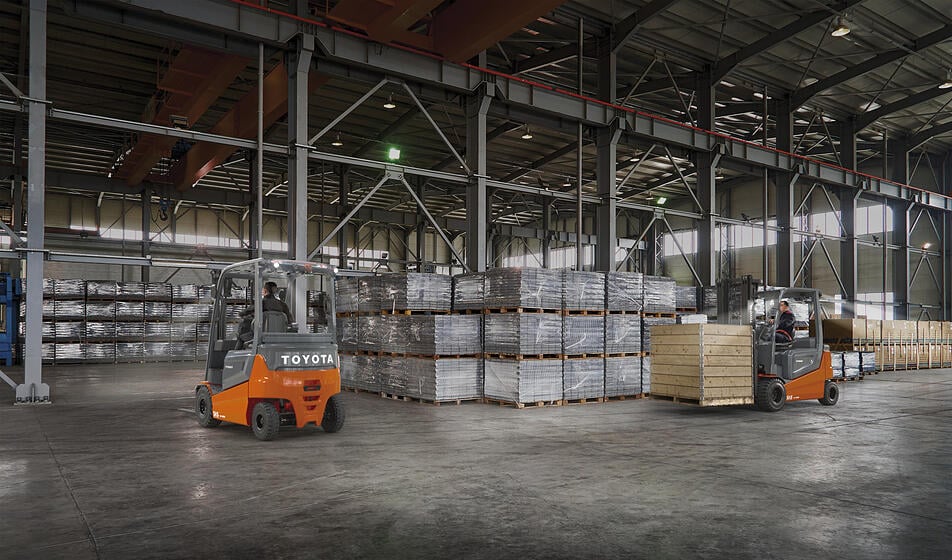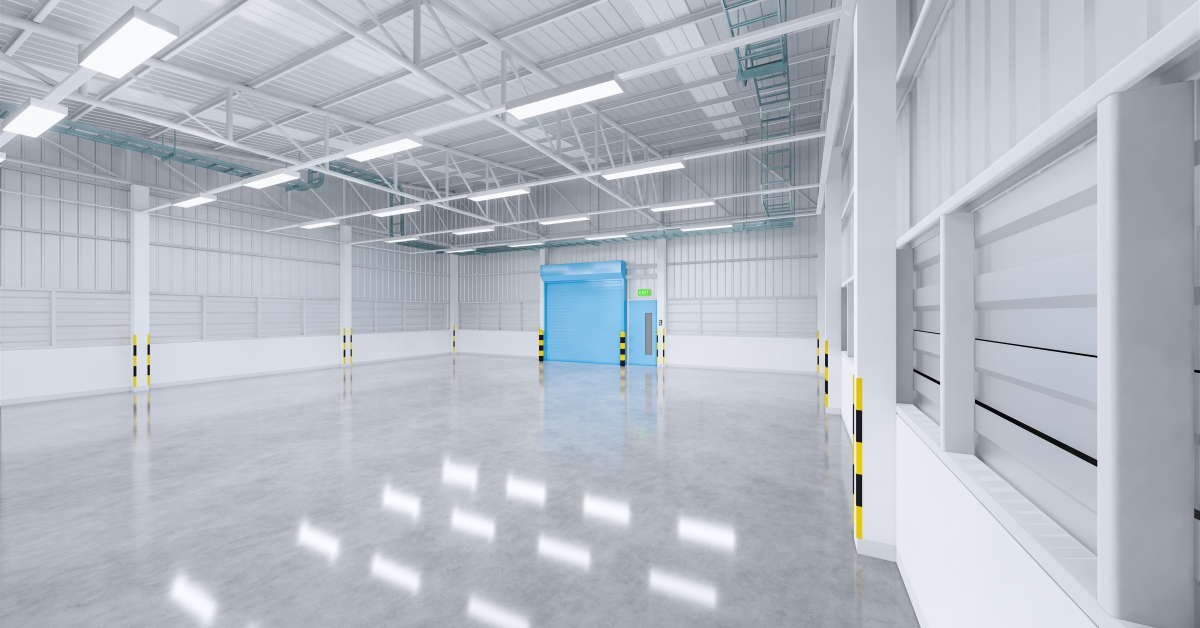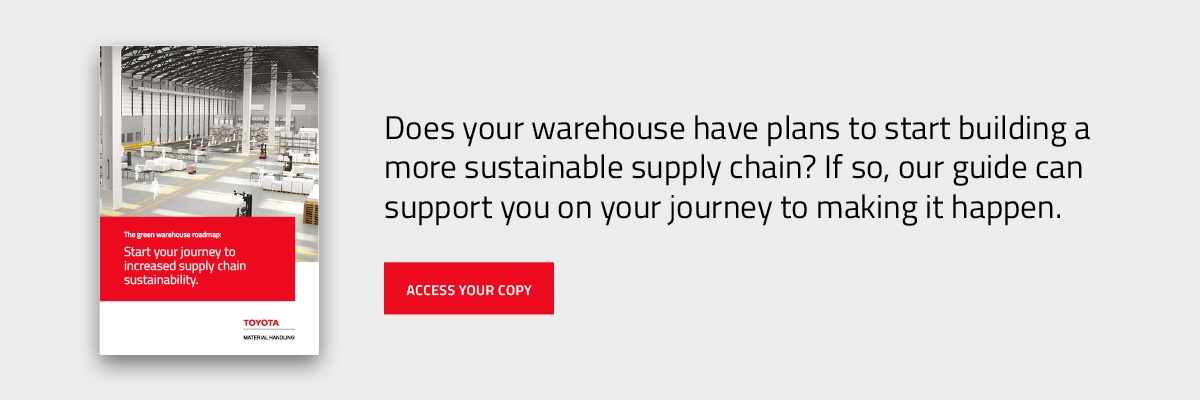For warehouses looking to achieve long-term sustainability, it is essential to carefully consider the design of your warehouse. In this article, we look at some of the most effective initiatives you can implement when it comes to sustainable warehouse design.
By doing so, you can confidently begin your journey towards building a green warehouse. These initiatives include:
- Use solar panelled roofs.
- Decentralise your distribution centres.
- Invest in (LED) lights and sensors.
- Insulate your warehouse.
- Reduce, reuse and recycle materials.
- Embrace automated technology.
1. Use solar panelled roofs.
To become more sustainable, your warehouse should look to reduce its energy consumption — this can be done by fitting solar panelled roofs on your warehouse. The UK’s solar market saw exponential growth in 2021 and this trend is only set to continue.
Solar panelled roofs are designed to produce energy without greenhouse gases or water pollution, allowing you to reduce your impact on the environment dramatically. There are three main types of solar panels you might want to consider fitting to your warehouse. These include:
- Monocrystalline solar panels.
- Polycrystalline solar panels.
- Thin-film solar panels.
As well as offering many benefits to the environment, solar panels can also positively impact your business operation.
Although the initial cost of having solar panels fitted can be expensive, they are designed to be low maintenance, meaning you are likely to see a return on investment over time and a bigger budget to spend on other environmentally friendly initiatives.
2. Decentralise your distribution centres.
Another aspect to consider when it comes to sustainable warehouse design is the geographical location of your distribution centres. By strategically positioning your distribution centres, you can limit the sprawl of transporting products and cut back on carbon emissions.
Decentralising your distribution centres to smaller warehouses will also allow you to drastically reduce the amount of energy you produce and reduce transportation costs. If you decide to go down this route, be sure to carefully consider the layout of your distribution centres and inherit best practices so they operate at maximum efficiency.
When choosing locations that will have the greatest benefit for the environment, these include hubs placed in major metropolitan areas and close to airports.
Start improving your supply chain and generating more revenue.
Our playbook outlines the most impactful strategies your business can implement to make effective changes to your supply chain and achieve your goals.

3. Invest in LED lights and sensors.
Low-energy lights are designed to reduce the unnecessary usage of lighting in buildings. They operate using sensors and only turn on if an activity is picked up in an area. Therefore, if a specific area of your warehouse is out of use for long periods, you can avoid using unnecessary energy and resource consumption.
LED lights are also known to have a long lifespan compared to your average incandescent bulb. They can usually last from six to 12 years before they need replacing. This solution is another way to drastically cut back on maintenance costs and become a more eco-friendly business. We have discussed more of the benefits of eco lighting in another article.
4. Insulate your warehouse.
When designing your warehouse, make sure you use environmentally friendly building materials.
First and foremost, your warehouse should be appropriately insulated. By insulating your warehouse, you can significantly reduce energy bills and help reduce greenhouse gas emissions.
Having the right insulation in place is also crucial for employee morale. Regulating room temperatures, appropriate sound levels and sustainable methods all create a better atmosphere to work in. You should also use materials with lower polluting properties, such as specialised paints, adhesives and wood products — all of these initiatives mount up to the greater good for the environment.
5. Reduce, reuse and recycle materials.
Waste reduction is critical to becoming more sustainable. Your warehouse design has a vital role to play in making this happen. Before you go any further, you should conduct an audit to understand which warehouse areas generate the most waste.
Picking errors are very common in the manufacturing industry, resulting in extensive waste and impacting profitability.
By implementing lean techniques, your warehouse can make structural changes to its operation to reduce errors like these, ultimately allowing you to add value during every step of the production cycle.
Minimising waste production is possible. However, you will likely generate waste in certain areas of your warehouse. This is only natural. What is important is to establish a strategy, so this waste can be recycled. This might involve working with a waste management company, for example.
6. Embrace automated technology.
When you begin to map out the design of your warehouse, you should always keep automation in mind. Warehouse automation can support you on your sustainability journey by offering many environmental benefits.
First of all, it reduces errors. By reducing errors, you will avoid building up as much waste. This is all made possible through innovative solutions such as Automated Guided Vehicles (AGVs). You will also reduce your energy consumption by embracing warehouse automation.
Vehicles such as automated fork lifts and pallet trucks are designed to run economically, with features such as lithium-ion batteries that are up to 30% more energy-efficient and reduce CO2 emissions. Regenerative braking is also a feature which captures and uses excess energy to help power the equipment. Also, automated warehouse systems do not require paper documents, meaning you can use fewer natural resources.
These are just a few initiatives your business could look to implement in your quest to build a green warehouse. However, before you start investing, we recommend having a clear sustainability strategy.
Achieve your green objectives with our latest guide.
We have created a green warehouse roadmap to help you begin mapping out your strategy. The roadmap also delves into the benefits of becoming more sustainable and how we can help you achieve your green objectives. Access your copy below.

